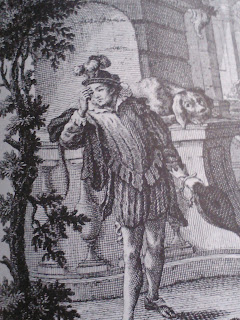Retrieved from NY Times Social Q's column, on August 8,2013
----------------------------------------------------------------------------------------------------------
A Hero's unwelcome
We received a
“save the date” card for a fifth birthday party for a boy my daughter knows. It
was to be a Superhero Soiree. But shortly before the date, we were uninvited.
The party is now just for boys because of its “masculine” theme, and my
daughter was invited to a separate party for him just for girls. I don’t want
to tell my daughter that she isn’t allowed to attend the real party, but she is
going to want to know what happened. Something about this feels wrong. Should I
mention it to the mother?
Anonymous, New York
Dear Anonymous,
Allow me to give a different construction to your
questions---though you will ultimately understand the purpose of my digression.
Your letter gives me license to pursue a topic of personal interest, familiar no
doubt to readers of my blog, regarding the nature of all those modern events,
set up for the entertainment of children, known as costume parties or
masquerades, of “superhero soirees,” or any such kind of spectacular mummeries,
whatever be their names. For these are all vile events wherein children are inevitably spurred
into Dionysian revelry, with the aid not of libations but an excess of
confectionaries, which plunge the poor children into an epileptic sugar orgy. They
writhe on the floor and thrash about the room like demented Maenads.
Yet the greater offense of these costumed parties
lies in their being supportive of that vile
and all-powerful social abstraction, which I continue to rail against, that
many-headed monster known as consumer culture. For what is the real purpose for
the existence of those modern-day popular children’s characters---such as Dora
the Explorer, Spiderman, Sponge-Robert Square Pants, and the ever-famous
Michael Mouse--- what is their purpose if not simply as means, established by
the capitalist business ventures, to compel your children to compel you to buy
them merchandise bearing the face of these characters? These toy-generating
businesses know very well that if the children, being thus seduced by
the shallow glamour and the oafish humor of these personages, if the children's demands be refused by the parents, the children may resort to whatever desperate
length to achieve their objective, such as depriving their parents of sleep, destroying household furniture, or simply producing such monstrous wailing
as to frighten all the dogs and cats in the neighborhood.
Thus by advising you to avoid all costumed parties
for you children I hope to have cut the Gordian knot of your dilemma. There is,
however, positive counsel I can offer you, which is to suggest a viable
alternative to modern-day costume parties---a children’s party modeled on the
Elizabethan masque.
There are indeed many costumes that may be worn for
this occasion. It is recommended that girls attend the party dressed as a
Virtue, while the mischievous boys may dress as a Vice. And as Virtue always
triumphs over Vice, so the boys will learn to emulate the Virtues, whilst the
girls will learn to be wary of the Vices. Here are some costumes that may be
appropriate for the girls to wear---
Innocence
The personification of Innocence is a sweet, small young girl, robed in
virginal white, and with flowers in her hair.
 |
| from Cesare Ripa's Iconologia |
As Innocence, you are to be washing your hands,
or applying liquid soap, whenever possible because your ablutions indicate
freedom from blemish of any kind, spiritual or physical. You are to carry a
palm frond---for that is the symbol of the purity of you received after
baptism. You may also carry a stuffed sheep with you, if you are unable to
bring a live one, as that, of course, is the symbol of the Great Redeemer, who
represents innocence and purity.
The personification of Diligence is a girl dressed in red who holds an
hourglass and a spring of thyme. Over her wrist hangs a spur. Beside her, a
rooster pecks at the ground. You may bring a toy rooster, if a live one cannot be obtained.
 |
| from Cesare Ripa's Iconologia |
The hourglass, symbolizing time, represents the industrious person’s
wish to do something and finish it.
Here is a list of costumes that may be worn by mischievous
boys, who may thereby represent different types of Vices, in contradistinction
to the Virtues represented by the girls.
Deceit
To represent Deceit, the boy ought to wear a
cloak decorated with many masks, with goatskin hanging over one shoulder, and a
fish net over one arm. In the other arm, the boy ought to carry a fishing rod
with a long line and a hook. The panther, by hiding his head and only showing his beautifully spotted back, attracts those who marvel at his appearance, and then springs up and devours them. You may carry a toy panther if a live one cannot be obtained.
 |
| from Cesare Ripa's Iconologia |
The goat is much beloved by the sargo, a kind
of fish, and the clever fisherman, according to Alciatus, covers himself with a
goatskin to lure the infatuated fish into the net; thus the deceitful person,
through an appearance of innocence or affection, tricks the unwary.
Obstinacy
To represent Obstinacy, the boy ought to wear
a multicolored sixteenth-century costume, holding a bellows in one hand, a spur
over the wrist, and be pointing to his forehead.
 |
| from Cesare Ripa's Iconologia |
The varicolored dress refers to the
variety of thing youth can get stubborn about. He touches his forehead, for
willfulness is a state of the mind, a determination to have one’s way. The spur
is a goad, a means of imposing one’s will on others, and the bellows is used to
whip up the fire, just as persistence or stubbornness is whipped up by the
desire to have one’s way.
No comments:
Post a Comment